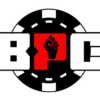This lesson will focus solely on preflop play, more specifically, starting hands. If you’re new to the game, playing tight is absolutely fundamental when learning to play winning poker. You do this because when you play only quality starting hands, it makes your play on later streets much easier. Playing too many hands will surely put you in some very difficult situations in which you may not be ready for. I’ve seen all too often where someone lost a big pot when the whole thing could have been avoided by not playing the hand in the first place. It’s very important to not emulate what you see on TV. You’re not Phil Ivey. You’re not Tom Dwan. So just fold preflop and stop lighting money on fire.
Below, I will discuss starting hands for each position at the table and then offer some advice for when deviating from our standard hand ranges. All ranges assume 100BB stacks at regular 6-max tables with a general mix of players from tight-aggressive to loose-passive (unless otherwise noted). Also, these ranges are for opening the pot ONLY, which is why there is no chart for the Big Blind.
UNDER THE GUN (UTG)
Being “Under the Gun” means that you have three players to act that have position on you; middle position (MP), cutoff (CO), and the button (BTN). It also means you have two players to act that are out of position relative to you, the small blind (SB) and the big blind (BB). Your UTG raising range should be the tightest of the four non-blind positions. As you begin to develop your game, you can start opening up your range somewhat, but for now, sticking to the following hands will keep you out of trouble. Let’s take a look at a standard preflop UTG range.
MIDDLE POSITION (MP)
Being in Middle Position means that you will have one player to act in front of you (UTG) whom you have position on, two players to act behind you (CO and BTN) who have position on you, and two players to act behind you (SB and BB) that you have position on. Middle Position is very similar to UTG. You will incorporate a few more hands, however, all the same principals apply. Let’s take a look at a standard preflop MP range.
THE CUTOFF (CO)
This is where poker will become more interesting. The Cutoff is the first position considered late position and is a spot where you will more often than not be in position. There is a much bigger transition in our range from MP to CO, as will be shown in our hand selection. The Cutoff should be one of your most profitable positions, second only to the Button. This position is where you will start isolating weak players that limp and 3betting players to keep the pressure on. The idea here is to steal blinds and isolate limpers. If you successfully steal someone’s blind you have earned 1.5BB’s (big blinds). If you beat a game for 5 PTBB (poker tracker big bets, or two big blinds) you will notice that you earn .1BB per hand. That means that stealing blinds earns you 15 times the average profit per hand. Beginning to understand why it’s so important and profitable?
THE BUTTON (BTN)
The Button is the most fun and interesting position to be in. There are more opportunities to raise, 3bet, isolate, and cold call than any other position. You will play loosest on the button. Your button raising range can be very wide or very tight, it really is all about the game you are in. It is very possible to raise 50% of your hands on the button profitably. This range is very tentative, it can be widened and tightened by as much as 15% based on your table. Let’s get into the range.
SMALL BLIND (SB)
Your open raising range in the small blind will be very different compared to your raising range versus limpers. When everyone folds, you only have to get through the big blind. Therefore, you can open a much wider range. You can basically use the same range as the Button above and go from there. Sometimes you can open nearly any two cards depending how often the Big Blind folds to your raise. Other times, you may need to fold more. So, always pay attention to who you’re playing against and adjust your range accordingly.
ADJUSTING TO TABLE DYNAMICS
In general, you should start off 3-betting mostly for value until you get a feel for the other players at the table. There’s no sense in 3-betting with a weak hand as a bluff if your opponent rarely folds. You also should also adjust your raising range based on stack sizes. As stacks get shorter, you should avoid hands like 22-66 and 76s, for example, and instead, raise hands like KJ, KT, A9, etc. Most short stack players are garbage and will be very happy to play for stacks with a very wide range. As for raising versus limpers, it’s really dependent on the style of the player who limped. Some will limp/fold preflop, some will check/fold a ton of flops and others will chase cards to the river. As you become better postflop, you will have the capacity to widen your range in position to isolate limpers. You will learn more about specific adjustments in future lessons.







